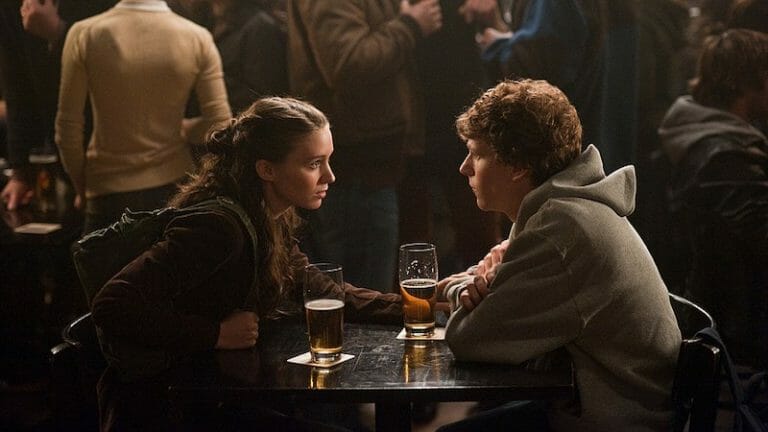By Ken Miyamoto · June 28, 2019

What are the secrets to Aaron Sorkin’s dialogue in his screenplays?
Welcome to our ongoing Learning from the Masters and Industry Insiders series where we seek out and feature excellent videos, interviews, and discussions of the art, craft, and business of screenwriting and pull the best words of wisdom, writing tips, and screenwriting advice.
Here we feature the Lessons from the Screenplay video The Social Network — Sorkin, Structure, and Collaboration and share their observations of Sorkin’s style, as well as some of our own elaboration.
Download the script for The Social Network here for free.
Sorkin says, “My parents started to see plays from a very young age. Even though I didn’t understand the story, I didn’t understand what was happening on stage, I loved the sound of dialogue. It sounded like music to me and I wanted to imitate that sound.”
The video points out that his dialogue is known for being snappy, repetitive, and clever. There’s a beat to dialogue as well. Every line matters. And the way it is written is like a piece of music with ebbs, flows, crescendos, etc.
Sorkin uses overlapping dialogue to dictate the rhythm and energy of a scene. This overlapping style creates drama and tension. It makes the dialogue exchange feel organic.
Creating a misunderstanding between two or more characters is an excellent and organic way to deliver exposition. When one character doesn’t understand the other, Sorkin allows himself to be able to offer exposition in a more engaging and realistic fashion.
When two or more characters have different trains of thought, the dialogue becomes more engaging. It’s hectic and real.
The films and TV episodes of Sorkin’s work often utilize non-linear storytelling. This type of storytelling enhances the dialogue because he structures his non-linear scenes so well. A line of dialogue from one point of time builds anticipation for the next.
The video wisely points out that who Sorkin collaborates with plays a pivotal role in the success of his dialogue. Whether it’s a visual director like David Fincher who makes his dialogue more cinematic with creative cuts or an actor like Jesse Eisenberg who can maneuver through Sorkin’s use of pauses, abrupt stops, and interruptions within the dialogue.
Watch the whole video below for specific references and breakdowns of scenes from Sorkin’s The Social Network script!
For all the latest from The Script Lab, be sure to follow us on Twitter, Facebook, and Instagram.
And become a member of TSL 360 to enjoy the LARGEST screenwriting education content library, featuring masterclasses, deep-dive interviews, and lectures from Academy Award-winning screenwriters, TV show-runners, producers, literary managers, agents, studio executives, and leading educators – all in one place.